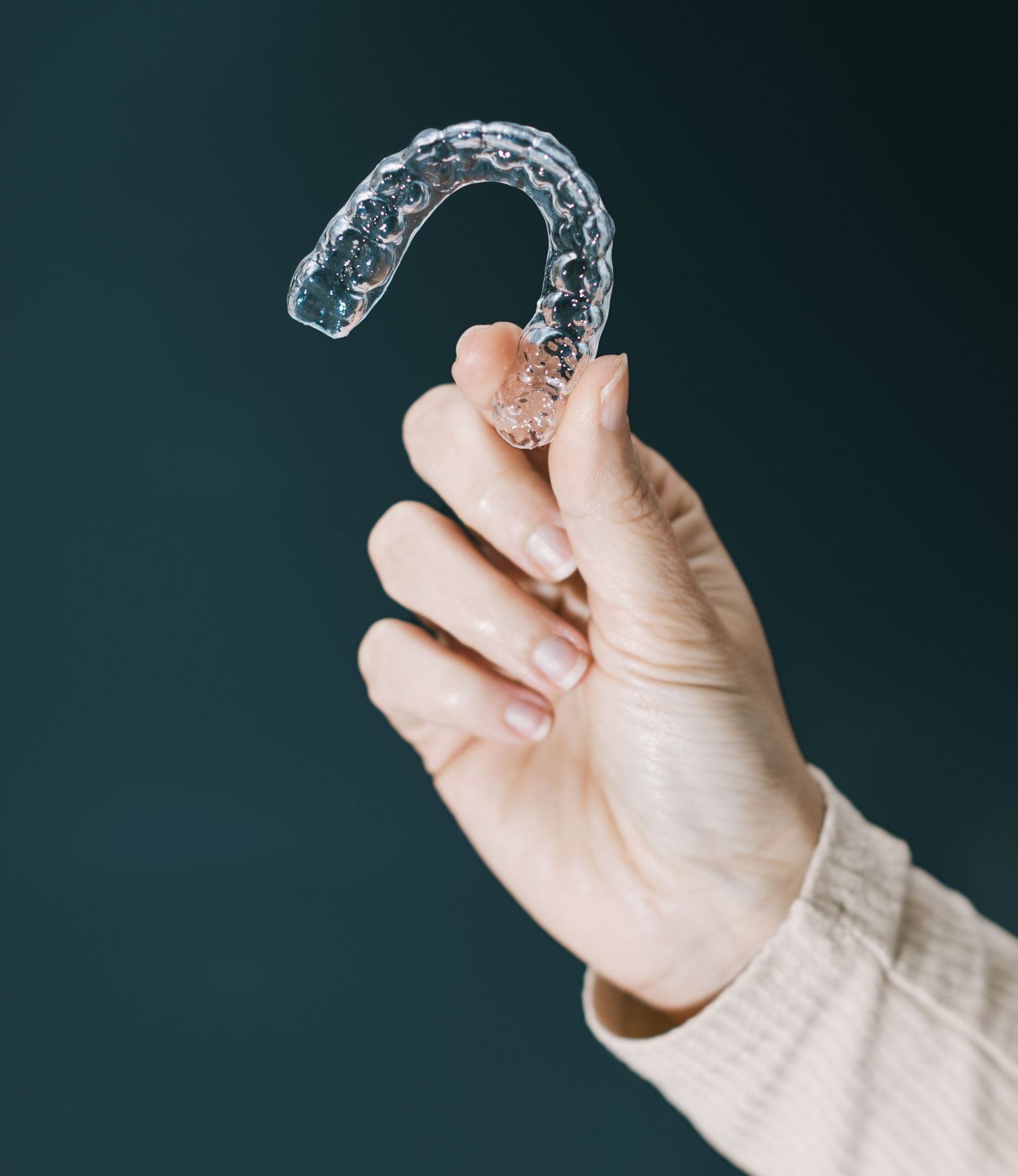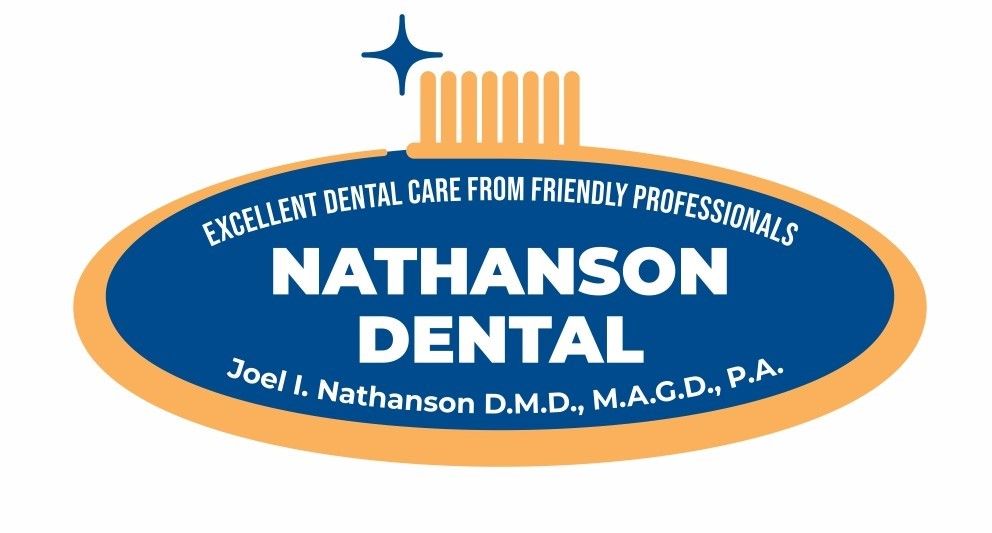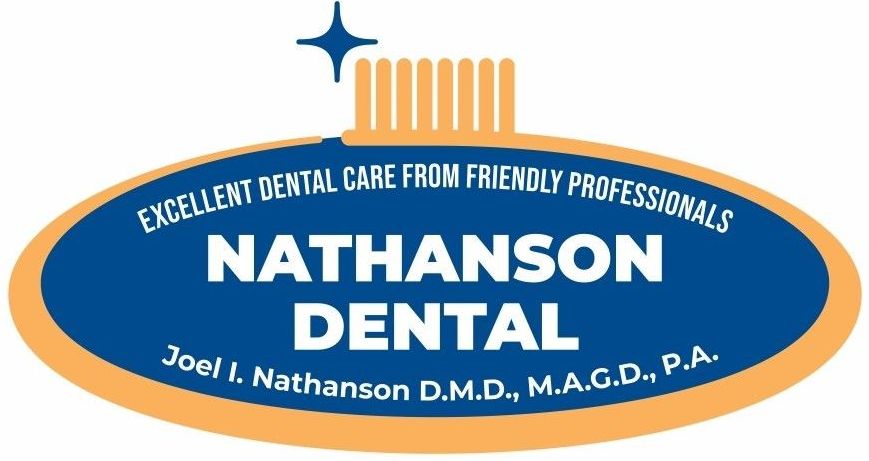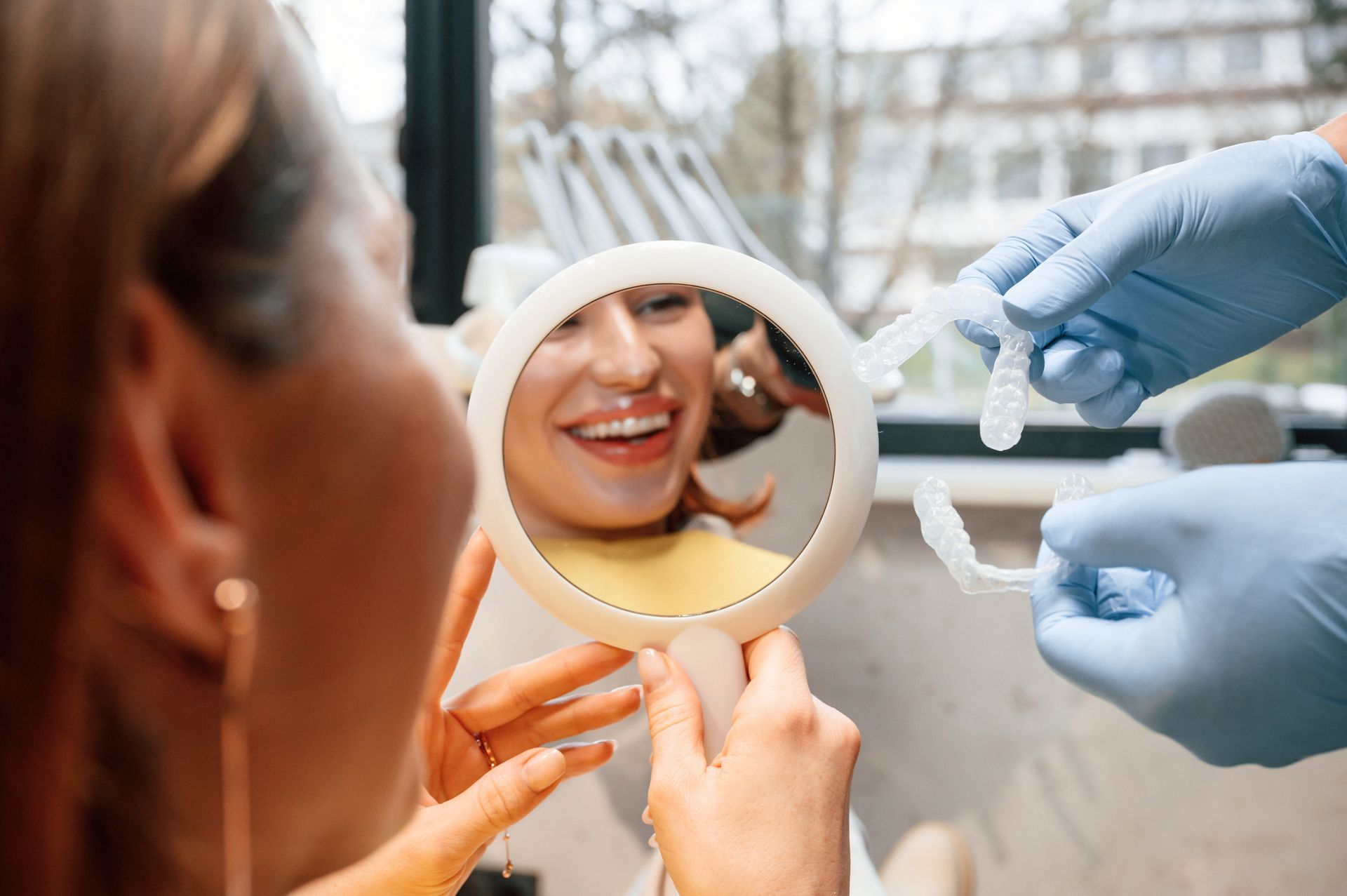
Invisalign® Clear Aligners in Hunt Valley, Maryland
Everybody deserves to have a smile they love. But if you have crooked, crowded or misaligned teeth, you may be reluctant to go through treatment with unsightly metal braces to straighten your teeth to achieve that beautiful smile.
Luckily, Nathanson Dental offers Invisalign®, an orthodontic treatment that straightens teeth without the use of metal brackets and wires. Instead, it uses clear plastic removable aligners to gently nudge your teeth into their proper positions.
With the aligners used in Invisalign®, you don’t have to worry about unpleasant metal braces obstructing your smile. And since they’re easily removable, it’s much easier to maintain good dental hygiene and continue to eat the foods that you love.

Are Invisalign® Right for You?
Here are some problems that are commonly corrected with Invisalign®:
- Overcrowding – This occurs when there is too little space for the teeth to align normally in the mouth. Overcrowding can cause tooth decay and increase the likelihood of gum disease.
- Crooked teeth –
This can occur when one or more of the teeth erupt out of alignment with the other teeth. Not only can this be unsightly, but it can cause problems with the bite and jaw joint (TMJ) as well.
- Large gaps between teeth –
This can sometimes occur either when teeth are missing or if they are “too small” in proportion to the jawbone.
- Crossbite – This common dental problem occurs when one or more upper teeth bite inside the lower teeth. As a consequence, uneven wear can lead to bone erosion and gum disease.
- Deep overbite –
This problem occurs when the upper teeth project further than, or completely cover, the lower teeth.


